NCE Graduate & Apprentice Awards | Interviews
AI meets civils to drive innovation and accolades
Interviews by Belinda Smart
The civil and digital engineering skills of early career professionals have been recognised at the NCE Graduate & Apprentice Awards 2023.
This year’s event, held at the ICE in November, was produced in partnership with the ICE and sponsored by Amey Consulting, Balfour Beatty, Binnies, GHD, Heathrow, Joseph Gallagher, Mott MacDonald and Stantec.
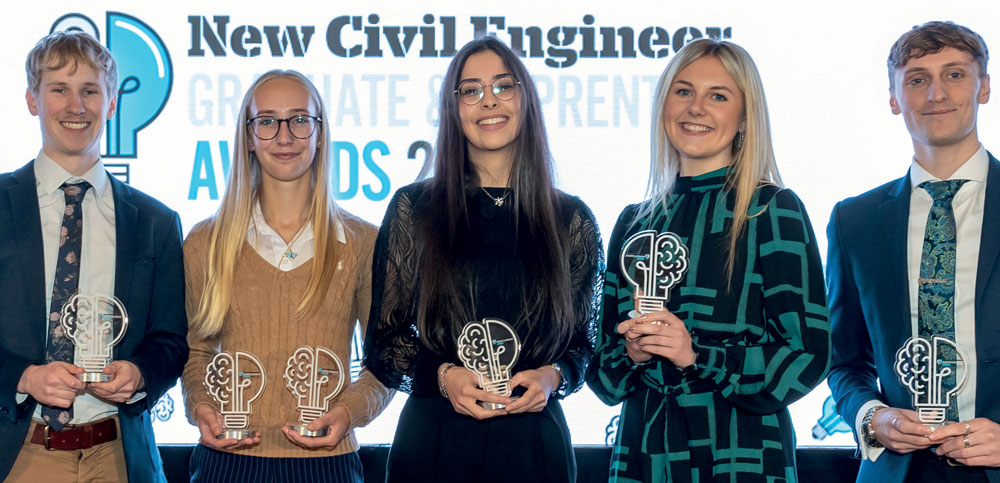 The 2023 winners (left to right): Charles Hemming-Clark, Ellie Carter, Jihane Tahri Hassani, Ella Barker, Dylan Powell
The 2023 winners (left to right): Charles Hemming-Clark, Ellie Carter, Jihane Tahri Hassani, Ella Barker, Dylan Powell
A total of 119 entries was submitted across the three categories – Graduate of the Year, Degree Apprentice of the Year and Apprentice of the Year – from which 17 candidates from 12 organisations were shortlisted.
Shortlisted candidates were also eligible for the overarching awards of Outstanding Contribution to Carbon Net Zero, Outstanding Contribution to Digital Engineering and Outstanding Contribution to the Industry.
During the live judging sessions the candidates gave a presentation to a panel of industry experts.
This year’s theme was the potential of artificial intelligence to drive change and the barriers to the wider adoption of this technology.
The 15 judges for the final stage were impressed by the candidates’ deep understanding of the topic and how much they have achieved in their short time in the industry.
KEY FACTS
119Total number of entries
15Number of judges
GRADUATE OF THE YEAR
DYLAN POWELL
 Dylan Powell is a graduate civil engineer who has been working at consultant Binnies since late 2022. He plays an active role in sustainability, including working with the Emerging Contaminants Focus Group with Binnies and its parent company RSK.
Dylan Powell is a graduate civil engineer who has been working at consultant Binnies since late 2022. He plays an active role in sustainability, including working with the Emerging Contaminants Focus Group with Binnies and its parent company RSK.
A key recent project that defines Powell’s contribution was the Millbrook Wastewater Treatment Works as part of a Southern Water framework job in Southampton. For this project he harnessed digital tools to identify carbon saving opportunities.
Powell led the development of an expansion of the weir at the works, which took as its starting point the identification of potential options for increased capacity.
These included constructing a new distribution chamber for the weir, extending the existing chamber, reducing the weir widths and splitting a downstream chamber into two, to provide an extra weir.
The easiest solution would have been to extend or replace the distribution chamber. Instead, Powell created computational fluid dynamics models to determine whether narrowed weirs would be able to accommodate the required flow without breaching the coping level. This would have negated the need to build an additional weir and therefore save the carbon impact of additional construction.
His use of digital modelling proved this was the case, providing carbon and cost savings as a result.
Powell’s command of civils and artificial intelligence belies early challenges. He says that at school, he grappled with dyslexia and felt hampered by conventional learning methods. But he was pushed to work harder and succeed.
Ultimately, he says that this struggle set him up well for the problem-solving requirements of civil engineering.
“I’d always been interested in civil engineering and now that I’m working in this sector, I know this is the area I’d like to be in. In particular, hydraulics really drew me in. I think the water sector is for me.”
APPRENTICE OF THE YEAR
ELLA BARKER
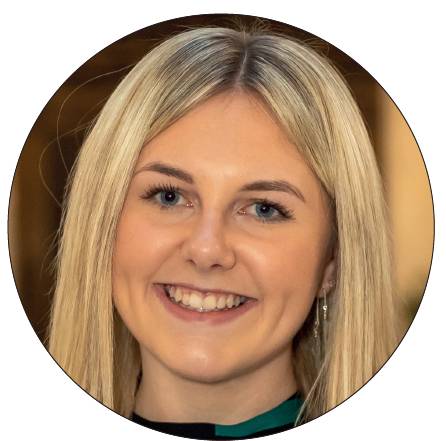 National Grid assistant project management apprentice Ella Barker is passionate about decarbonising the UK’s electricity system.
National Grid assistant project management apprentice Ella Barker is passionate about decarbonising the UK’s electricity system.
Sustainability is a key area of interest for her. As a civil engineering technician apprentice at Kirklees Council, she wrote articles promoting sustainability and was part of the council’s Green Employee network. She also successfully rolled out flood management and drainage schemes.
Barker is keen to promote science, technology, engineering and mathematics (Stem) as well as inclusion and diversity.
“I’ve done a lot of Stem workshops and careers events going into schools, promoting apprenticeships and getting kids involved with building a bridge with spaghetti and marshmallows. As kids, they don’t really want to be doing serious tasks, but it’s a great way to engage them. Ten years down the line they could be doing that for real.”
She is also particularly motivated to support the talents of neurodiverse people. “I’m dyslexic myself, so I’m interested in making resources more accessible instead of everything being in a written format.”
“I always say I never want to stop learning“I did a couple of weeks of work experience at Mott MacDonald and I loved it. That’s when I decided that this is what I want to do.”
An early decision to pursue an apprenticeship rather than a university degree was the key to Barker’s success and enthusiasm for civil engineering.
“Throughout school I had no idea what I wanted to do. I found studying hard, so I felt I’d rather get into a job.
After completing her GCSEs, Barker went on to do a Level 3 apprenticeship in civils and followed that with the Level 4 project management apprenticeship.
“I always say I never want to stop learning,” Barker said.
OUTSTANDING CONTRIBUTION TO INDUSTRY
CHARLES HEMMING-CLARK
 Frankham Consultancy Group graduate engineer Charles Hemming-Clark is particularly proud of a recent project that leveraged artificial intelligence (AI) to extend the life of a cast iron footbridge dating back to 1900.
Frankham Consultancy Group graduate engineer Charles Hemming-Clark is particularly proud of a recent project that leveraged artificial intelligence (AI) to extend the life of a cast iron footbridge dating back to 1900.
Avoiding the need for demolition and reconstruction saved materials and carbon emissions on the project in a Woolwich dockyard.
Using digital modelling, HemmingClark designed larger U-Frames to make the bridge’s top chord more rigid and increase its capacity.
Hemming-Clark has also contributed to the company’s digital engineering capability by implementing Lidar scans in its inspection work. He says the resulting 3D visualisations give clients a better understanding of their assets.
Hemming-Clark had no hands-on experience of civil engineering while at school although he did get a lucky break through when a maths teacher who had previously been a civil engineer took interest in his future. Once Hemming-Clark began to explore the discipline, he was hooked.
“I like to get the students to think about ways in which we can use fewer materialsIt is unsurprising that he is keen to give young minds the direct exposure to engineering he would have relished at school.
He has set up a work experience programme for school students, focused on designing a bridge over the Thames. The programme includes writing optioneering reports, and 3D modelling using SketchUp.
“I like to get the students to think about ways in which we can use fewer materials and how that will affect the structure,” he says.
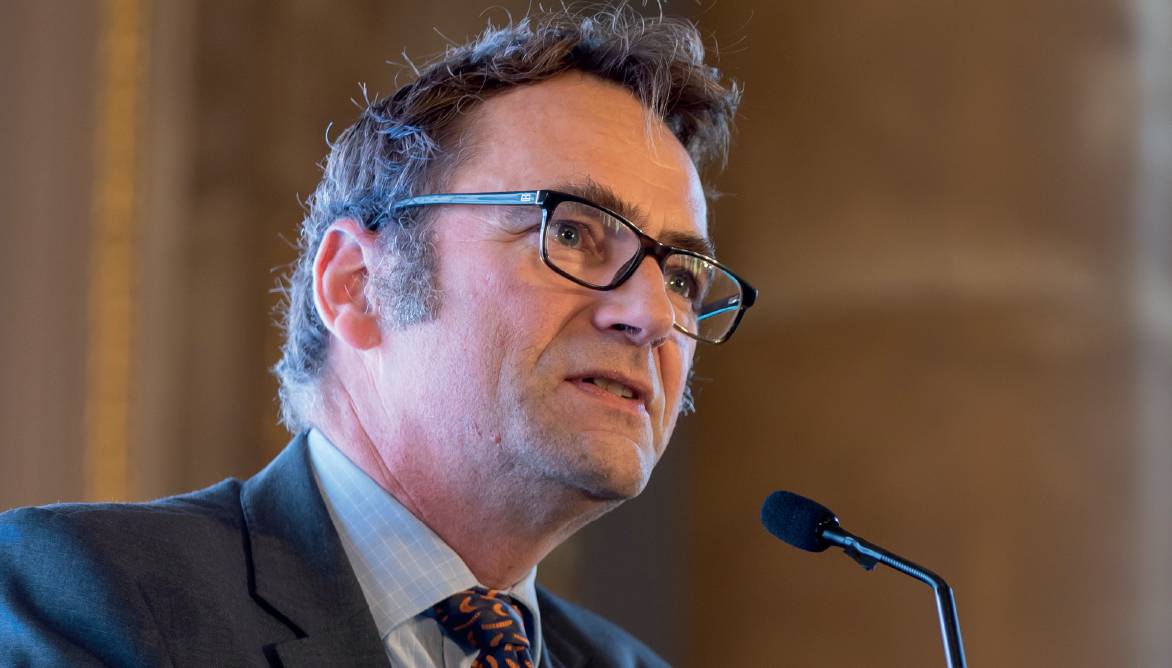 During the awards ceremony, ICE senior vice president Jim Hall delivered a speech about the challenges this generation of engineers will have to tackle
During the awards ceremony, ICE senior vice president Jim Hall delivered a speech about the challenges this generation of engineers will have to tackle
OUTSTANDING CONTRIBUTION TO DIGITAL ENGINEERING
JIHANE TAHRI HASSANI
 Embodying a new breed of engineer equally conversant in engineering and digital technology, Jihane Tahri Hassani is a graduate civil engineer. She joined Mott MacDonald in 2018 and has worked on projects that combine both disciplines.
Embodying a new breed of engineer equally conversant in engineering and digital technology, Jihane Tahri Hassani is a graduate civil engineer. She joined Mott MacDonald in 2018 and has worked on projects that combine both disciplines.
As a bridge engineer and asset management consultant, she has developed and used digital tools to improve outcomes on several projects.
She believes a data driven, proactive approach to asset management can extend the lifespan of assets and consequently reduce the need for new construction, minimising waste and optimising the use of resources.
One of her projects was the development of the Load Effect Optimiser, which determines the most onerous effects on beams of loads and a range of constraints such as springs in a range of stiffnesses. She also developed the Level 0 to Finite Element tool, which automatically creates finite element models containing detailed data about bridges, based on client spreadsheets.
Another of her projects was Smart Invest, a data driven, performance-based system to help asset owners make more objective, transparent and robust decisions on investment and maintenance.
“I think engineers are working much more closely with digital solutions than we used to,” says Hassani.
“The same way we went from hand drawn construction plans to AutoCAD, now, instead of having to do things manually, we’re automating more and more to the point where instead of IT specialists automating processes, it comes from the civil engineers themselves, because they understand the requirements.”
Hassani wants to pursue her passion for traditional design and assessment, as well as continuing her involvement in digital initiatives.
OUTSTANDING CONTRIBUTION TO NET ZERO AND DEGREE APPRENTICE OF THE YEAR
ELLIE CARTER
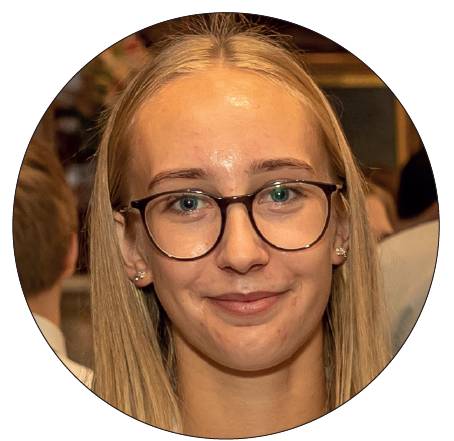 Ellie Carter is a civil engineering degree apprentice at AtkinsRéalis, where she is contributing to the understanding and development of innovative sustainable solutions as a member of the company’s Engineering Net Zero Taskforce.
Ellie Carter is a civil engineering degree apprentice at AtkinsRéalis, where she is contributing to the understanding and development of innovative sustainable solutions as a member of the company’s Engineering Net Zero Taskforce.
Carter leads the development of a project database to analyse areas for potential carbon savings and establish benchmarks for future performance.
She is also developing a carbon tool selector that will help project teams select relevant tools to their sectors, project types and client requirements. It will also give guidance for their use.
Carter says a high point in her recent career has been the development of a digital sustainability dashboard for Anglian Water’s Strategic Pipeline Alliance (SPA).
She developed the tool using Microsoft analytics platform Power BI, to visualise the overall impacts of design changes.
On the SPA the tool demonstrated overall net savings of 637t CO2e and £6.54M, alongside 39 examples of positive social value impacts.
“One thing that we thought was going to come out of that was that there would be added carbon due to the meandering of the pipeline. You start with a straight line and then you have to add diversions to avoid things and it gets longer; there’s more to build.”
She says the dashboard confirmed that carbon reducing measures introduced in the design and construction of the pipeline offset any additional impacts from changes to the pipeline’s route.
“I’ve created a model that automates the flotation calculations for buried pipelinesCarter was also asked to help with a pipeline process workflow to identify other processes that could be automated.
“I decided to do automation of some design calculations, so I wrote code and I’ve created a model that automates the flotation calculations for buried pipelines.”
She believes the dashboard will support future projects by providing a framework for quantifying carbon savings during design development.
Carter is also investigating the potential to automate some processes and calculations used by AtkinsRéalis and is looking at the required next steps to enable it to adopt new technologies.
The project includes identifying blockers to the greater uptake of artificial intelligence and suggesting programmes for improvement to the senior leadership team.
Carter is convinced that key among these blockers is a lack of combined engineering and IT expertise.
JUDGES
Judges for the final live stage were:
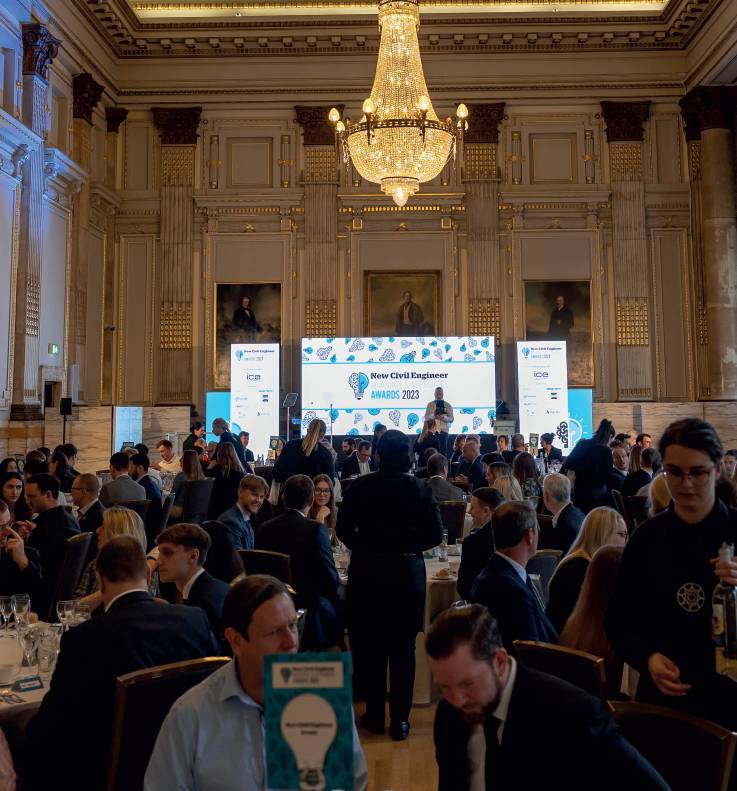 Liz Chapman, consulting engineering director for UK and Ireland, Stantec
Liz Chapman, consulting engineering director for UK and Ireland, Stantec
Peter Crosland, national civil engineering director, Civil Engineering Contractors Association (Ceca)
Rob Eells, contracts manager, Joseph Gallagher
Steve Feeley, director, membership recruitment, ICE
Cat Goumal, head of education and professional development, Chartered Institute of Highways & Transportation
Ken Harland, executive advisor,
Amey Marie-Claude Hemming, director of operations, Ceca
Daniel Jacques, head of engineering, Balfour Beatty
Ben Jones, head of capital PMO, Heathrow
Sotiris Kanaris, features editor, NCE
Graham Manners, area preconstruction lead, Balfour Beatty
Matthew Raybould, technical design services director (water and energy), Stantec
Rosalind Thorpe, director of education and standards, Chartered Institute of Building
Nathan Woods, operations director, GHD Melissa Zanocco, head of programmes, Infrastructure Client Group